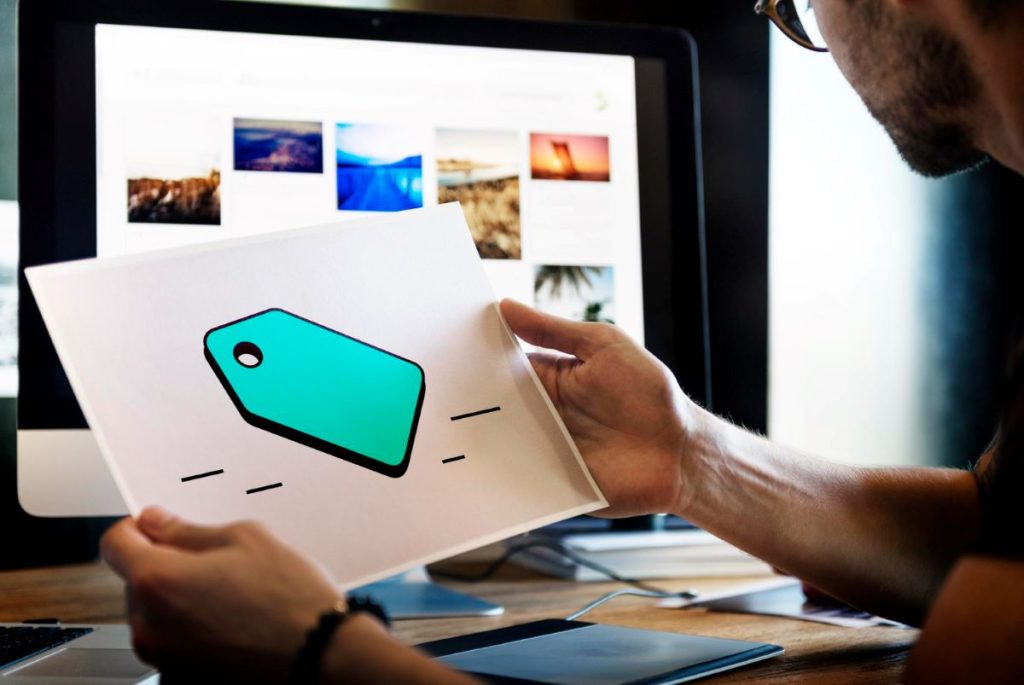It’s difficult to create a unique brand from scratch. How should it appear? What emotions should it evoke in viewers? Will my intended audience find it appealing?
When you begin to consider how to link the dots between what you’re selling and who you’re attempting to reach, questions like these unavoidably arise. To get started, you might look at our article on how to launch a business.
What you need to know about creating a powerful brand identity for your company, whether you’re starting from scratch or want to make changes to your current branding design.
Table of Content
- Describe a brand
- How to build a Brand
- 1. Examine your competition and your target market.
- 2. Determine your personality and goal.
- 3. Select a name for your company.
- 4. Write a slogan
- 5. Pick the colours and fonts that will represent your brand.
- 6. Create your Brand logo.
- 7. Set up your brand throughout your business.
- Customise your brand as you grow
- FAQs
Describe a brand
A brand is a distinctive identity or image that sets one product, service, or business apart from the competition. It is represented by a number of things, including a name, logo, design, symbols, colours, and even how the client interacts with the company as a whole.
If you stop to consider it, humans also have personal brands. Each of us has a name, a face, a communication style, and a manner of speaking, and based on these characteristics, we leave various impressions on different individuals.
Similar to people, companies have names, goods, logos, colours, fonts, voices, and reputations that contribute to who they are and how people perceive them.
Without being consistent and upholding that consistency as you extend your brand to every aspect of your organisation, you cannot effectively approach brand creation. The ideal method to develop a brand is to first decide how that consistency will look and what emotions you want it to arouse.
Learn more: What Performance Branding Can do for your Customer
How to build a Brand
While you may go over some steps again as you pivot or build your brand, it’s crucial that you think about each one as you develop your brand identity.
Let’s begin by building the foundation for how to develop your company’s brand.
1. Examine your competition and your target market.
Understand the present market, including your potential clients and rivals, before you begin making judgements about how to build a business brand.
There are several approaches to this:
- Search for your product or service category on Google, then examine the immediate and indirect rivals that appear.
- Investigate relevant Reddit subreddits and listen in on discussions and product advice from your target market.
- Ask those who make up your target market what brands they favour while shopping in your industry.
- Look at the social media profiles or sites that your target audience is interested in and follows.
- Take a virtual or physical shopping trip to obtain a sense of how your target market might browse and purchase goods.
As you conduct your study, keep the following in mind:
- Who your “lowest hanging fruit” customers are—those you could sell to most easily—who your top-of-mind rivals are—those companies that are well-known and established in the industry
- The language they use to express their interests, the topics they discuss, and how they speak to you
Before continuing, it’s critical to have a firm grasp on this because it will guide your brand’s emphasis and help it stand out from rivals.
2. Determine your personality and goal.
In particular at first, you can’t build your brand to be everything to everyone.
As you construct your brand, it’s crucial to identify your emphasis and let that guide all of the other components.
The following questions and branding exercises will help you consider the purpose and voice of your brand.
What would you call your positioning?
A positioning statement is a sentence or two that asserts your position in the industry. This is merely to assist you in building your brand’s slogan and in helping you to answer the proper questions about your brand; it is not necessarily something you put on your website or business card.
You are only in competition with yourself and your special value proposition. Find it, capitalise on it, and incorporate it into the marketing for your brand.
As an alternative, you can write this down as a mission statement that makes a clear promise to your clients or to the world if the business you intend to create has a cause at its core (for example, if you’re launching a social enterprise).
What adjectives would you use to describe your brand?
Imagine your brand as a person to help you understand how to develop your brand. Was that how they would be? What personality traits might appeal to your target audience?
This will assist in guiding the tone of all of your written and graphic content as well as your social media presence.
Presenting three to five adjectives that represent the kind of brand that might resonate with your audience is a fun and helpful practise for learning how to develop a new brand. I put together this list of qualities to aid you in starting.

Which concepts or connections best define your brand?
You can find the distinctive features you want your brand identity to have by personifying it or thinking of it as a metaphor.
This can be a car, a pet, a famous person, a sports team, or anything else as long as it has a well-known reputation in your mind that conjures the mood you want your brand to evoke.
For instance, you may pick the raccoon as a starting point if you want to build your brand targeting business owners because they are resourceful survivors who will do anything to survive.
What animal would your brand identity be, and why do you think it is similar to that species?
3. Select a name for your company.
Any alternative name for a rose would still have the same lovely aroma. On less feet, though, would be Nike by a different name.
What does a brand name mean? You can argue that your name matters a lot or a lot less depending on the type of business you intend to launch.
A brand is much more than just a name, as we’ve already stated. What gives your brand identity’s name true market meaning are its character, deeds, and reputation.
How to Create a Good Brand Name
However, one of the first significant decisions you must make as a small business owner is likely the name of your enterprise. If you want to go that route, it will have an impact on your brand name, logo, domain, marketing strategy, and trademark registration (it’s more difficult to register a trademark for generic brand names that directly reflect what you sell).
The ideal store name is one that’s challenging to copy and even more challenging to associate with other competitors. Instead of picking a brand name based on your product category if you intend to increase the product lines you offer in the future, think about keeping your company name generic to make pivoting easier.
To come up with some names, you may either use our free business name generator or attempt one (or a combination of the following methods):
- Create a term, such as Pepsi.
- Rephrase a word that is unrelated, such as Apple for computers.
- Use an ambiguous phrase or metaphor, such as buffer.
- Give a literal description of it, like The Shoe Company (caution: this is easy to copy).
- Change the spelling of a word by adding, deleting, or adding Latin endings, as in Tumblr (Tumbler) or Activia.
- A lengthy name can be made into an abbreviation, such as HBO (Home Box Office).
- Combine two words: Snapple (snappy + apple) or Pinterest (pin + interest).
- Be sure to look around to see what’s available before choosing a domain name for your brand because your brand name will also effect the domain/URL of your website.
4. Write a slogan
A memorable slogan is a nice-to-have item that you can use as a tagline in your social media bios, website header, personalised business cards, and anywhere else that only allows a few words to have a significant impression.
Remember that you can always alter your phrase when you discover new marketing opportunities; Pepsi has had over 30 different slogans over the previous few decades.
A strong tagline increases brand awareness by being brief, memorable, and memorable. Here are some ideas about how to approach creating your own slogan:
- Affirm your position. The strongest coffee in the world is Death Wish Coffee.
- Use a metaphor in it. Red Bull says, “Red Bull gives you wings.”
- Take on your customers’ mentality. Nike says, “Just do it.”
- Utilise labels. “A party game for horrible people,” describes Cards Against Humanity.
- Make up a rhyme. Coffee from Folgers: “The best part of waking up is Folgers in your cup.”
- Give a literal description. The slogan of Aritzia is “Everyday luxury to elevate your world.”
5. Pick the colours and fonts that will represent your brand.
Once you’ve settled on a name, you should consider your brand design, including your colour scheme and typography, to determine how you will visually represent your company. When you start using a website builder to create your own website, this will be useful.
Picking a colour scheme
In addition to defining your brand’s visual identity, colours can also assist you convey the sentiment you want to convey and maintain consistency throughout all of your activities. To prevent misleading your potential clients, use colours that set you apart from your immediate competition.
Even though colour psychology isn’t a precise science, it does influence your decisions, particularly when choosing the colour for your brand’s logo.

Take into account how well-read white and black text will be against your chosen colour scheme, as well as how coloured text may appear against white and black backgrounds. To come up with a palette of complementary colours, try using a programme like Coolors. Grab the hex codes to have on hand, then look through the many hues to select your favourite.
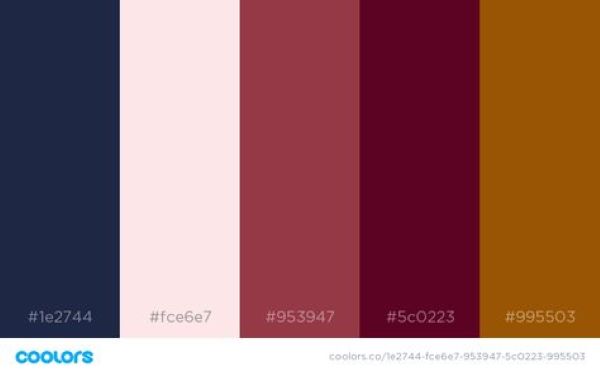
Select your fonts
Now is an excellent time to consider the typefaces you might want to employ for your website.
When it comes to fonts, keeping things straightforward is the best way to establish a brand. Pick no more than two fonts: one for headings and one for body copy (this does not include the typeface you might use for your brand logo).
Use Fontpair to browse a large collection of complementary fonts.
6. Create your Brand logo
One of the first things that undoubtedly comes to mind when you consider creating a new brand is a brand logo design. And with good reason—after all, it represents your business and may be present everywhere your brand is.
Ideally, you should design a logo for your brand that is distinct, recognisable, and scaleable to work at all sizes (something that is frequently missed).
Think of all the locations where your company’s logo must appear:
- Website
- Profile image on social media
- Item packaging
- YouTube channel banner
- Video commercials
- Favicon (the little icon used to identify the open tabs in your browser
It will be nearly impossible to read if, for example, your Instagram avatar is a text logo. Create a square version of your brand logo with an icon or symbol element (referred to as a logomark) that is still recognisable at smaller sizes to make your life easier.
Invest in a logo that can be used both online and in print media.
Keep in mind that the adidas logo features both the wordmark and the “sparks” logo, which can be used together or individually.
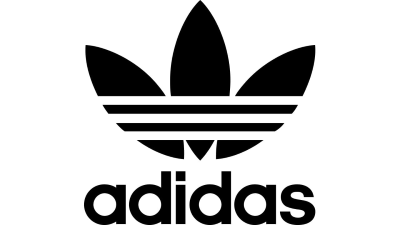
The following are some of the several logo types you can select to assist you in working with designers and discovering a look that makes sense and will support the development of your business. Make sure the fonts and colours you selected complement your logo and help to represent your identity.
Abstract: Google Chrome
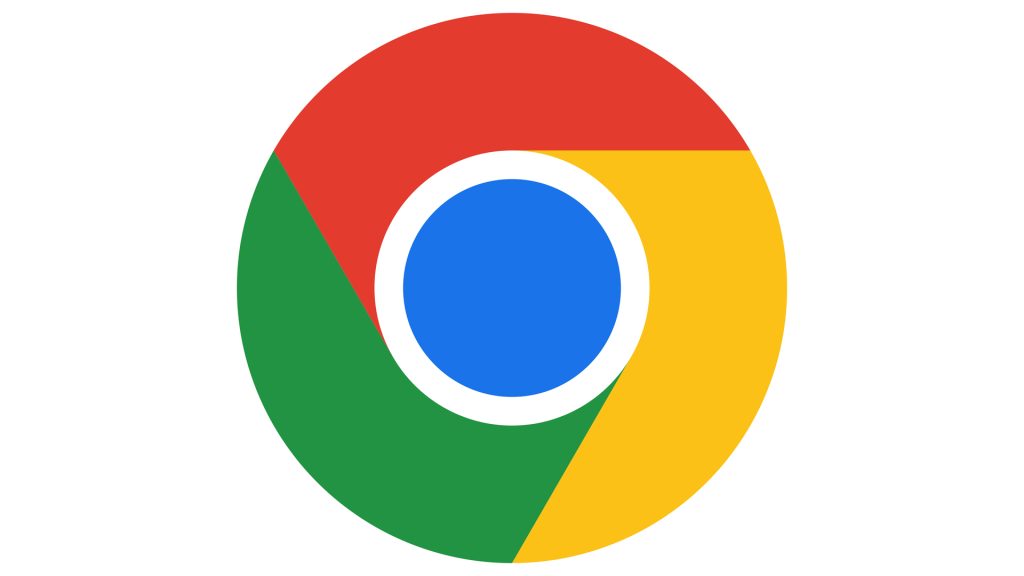
An abstract brand logo has some significance, but it’s essentially simply a shape and some colours that are difficult to connect to anything in the outside world.
The advantage of an abstract logo is that you may invent this meaning yourself and make it come to life in your clients’ minds.
Wordmark: McDonald’s
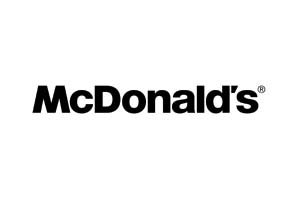
The name of your brand, along with its colours and logo, become the wordmark logo. Wordmarks have the drawback of being frequently difficult to design in a scalable square shape and readily losing their legibility when smaller. However, they clearly advertise your brand.
For example, McDonald’s employs its own typeface called Lovin’ Sans for their workmark logo outside of the iconic golden arches.
Combination: Meta

Many logos are a fusion of styles since each type of design has its own limitations.
When you feel that both a wordmark and an icon are necessary to represent your brand, you don’t have to pick between them as a new small business figuring out the ideal way to develop a brand and logo. Get the best of both worlds with a hybrid logo. This makes it simpler to fulfil the requirement of designing a scalable logo while keeping your brand name prominent.
Making your wordmark logo’s first letter into an icon logo, as Meta did with its M, is a straightforward way to do it.
You’ll likely be hiring a designer to create your brand logo unless you have design skills of your own. You can hire a designer through Fiverr or Upwork, or you can hold a contest on 99Designs to find a new logo.
Learn more: How Shopify support the ecommerce trend of Social Commerce
7. Set up your brand throughout your business.
By using your branding throughout your company, you may create a unified brand narrative. A brand story encapsulates “who” and “what” your company is. Every customer engagement with your brand, both in-person and online, is set up by this.
According to Shopify’s research into the factors that influence customer and buyer trust, customers who are making their first purchase from an online retailer frequently check the company’s mission and purpose to determine whether they share any common values (such as sustainability) with the enterprise. They will visit the About Us page to find out more about the company they are purchasing from and, for more socially concerned customers, how the company is run. If your company has a brand narrative, be careful to communicate it with customers as it might reassure them that you are a trustworthy brand.
Your positioning statement can help you get started when creating a new brand, but you’ll need to answer the following questions to really nail your brand story:
- What motivated me to launch my business?
- Why does this business exist?
- How do we improve the world?
- What history should my customers be aware of regarding my company?
Not all businesses have a clear-cut mission or set of values, but if yours does, explain your clients why in your brand story. Consider the companies TOMS and Coca-Cola; the one is a brand with a clear objective, the latter less so.
The motto of TOMS, a manufacturer of shoes and accessories, is “in business to improve lives.” With the help of a humanitarian initiative called One for One, in which it provided shoes to children in need, TOMS established a solid reputation as a social enterprise. With TOMS, customers could feel good about each and every purchase they made.
Your brand’s story can develop over time, just as it did with TOMS, which went beyond just giving away shoes to donate a third of its income to grassroots movements promoting long-term change.
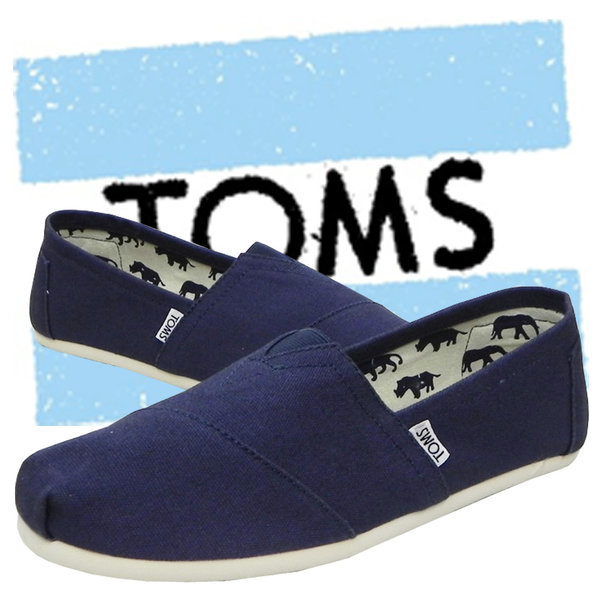
Although Coca-Cola is a well-known soft drink company around the world, the company doesn’t have a clear social or environmental objective that underpins its brand. Instead, it uses branding that highlights the idea of gathering together for fun, enjoyment, and connection to appeal to its target group.
If friends or family members consume Coca-Cola goods with the client, the customer may feel closer to them socially afterward.
There is much to be learned from Coca-Cola for business owners creating a fresh brand. It provides wonderful illustrations of brand marketing through enduring patterns, fonts, pictures, and hues that are easily recognisable.
Give your customers a tale to share about your brand with others and themselves, regardless of whether focusing on a purpose is the ideal strategy to develop a brand for you.

Customise your brand as you grow
The process of developing a brand does not end with the creation of a logo or tagline or even with your brand awareness following launch. The theme you pick for your website, the marketing materials you create, the way you package and transport your products—everywhere your customers engage with you, your brand needs to be present and consistent.
As you expose your brand to more customers and gain a better understanding of who they are and how to communicate with them, you’ll continue to develop and evolve the design and identity of your brand.
It’s critical to understand that you can never completely control how consumers interpret your brand identity.
You can steer customers in the correct direction, create a positive first impression, and maintain your reputation, but you can’t change the unique opinions that each individual has of you (for example, if they received poor customer service).
All you can do is strive to connect with your core audience while always putting your best foot forward. But perhaps you now have the means, information, and assets necessary to begin creating your brand right away.
FAQs
Q1: What should I need to pay for a logo?
- A logo should cost whatever you feel comfortable charging. You can outsource your branding and logo design for as little as a few hundred dollars or as much as tens of thousands of dollars. Initially, it’s OK to make use of a free logo maker. When your business becomes more well-known, you’ll probably want to spend money on a custom logo.
- Your brand’s identity is what makes it who you are and what it stands for. Your brand’s principles, attitude, and appearance are all part of its brand identity. Every aspect of your business, including your logo, colours, copy, and in-store experiences, communicates your brand identity.
Join us as you begin your Shopify journey
We are e-commerce specialists and Shopify Partners. Get in touch with us if you need assistance with Shopify, need a whole website built, or have any other general questions.

